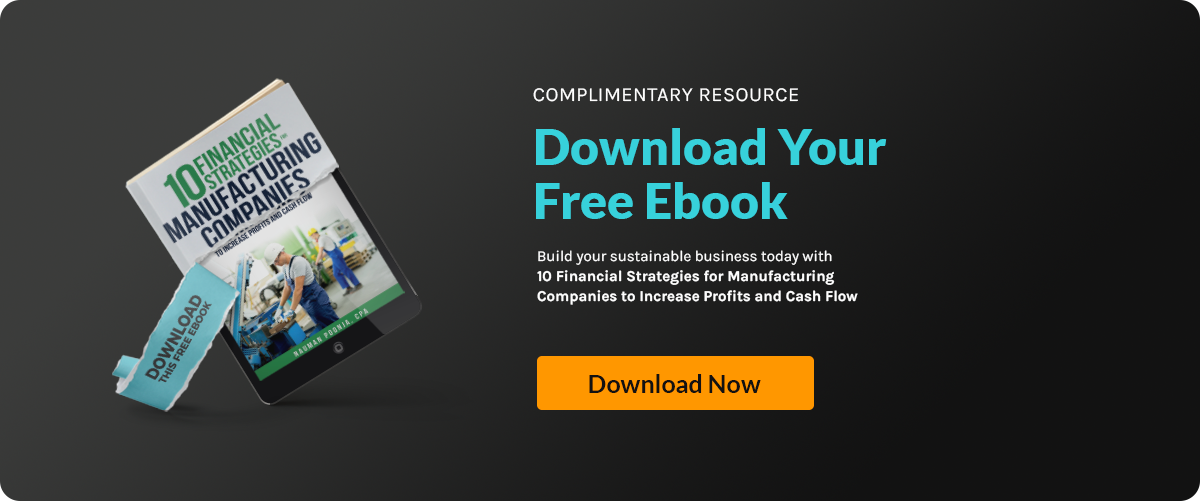Scaling production without a risk plan? That's a dangerous game. When companies grow, so do the...
Mergers and Acquisitions Risks in Manufacturing

Mergers and acquisitions are like walking a financial tightrope. Get one thing wrong, like asset valuation or planning, and your whole deal can fall apart.
In manufacturing, the stakes are even higher. You’re not just merging teams, you’re merging supply chains, production lines, and millions of dollars in assets. Without a clear financial strategy, those “synergies” you were banking on can quickly become costly headaches. It’s no surprise that nearly 75% of companies fail to meet their M&A goals, largely due to financial risks that weren’t properly managed.
It’s easy to get caught up in the excitement of an M&A deal, but the real challenge is ensuring a smooth transition. Accurate asset valuation, integrated financial planning, and smart oversight are all essential pieces of the puzzle. Miss any of these, and the risks can pile up fast.
So how do you keep your M&A deal from turning into a financial mess? Keep reading, and we’ll walk you through the strategies that can help you stay on solid ground.
Identifying Mergers and Acquisitions Risks in Manufacturing
The first step in determining whether a transaction is a good move or not is identifying potential risks. Understanding these challenges can help you decide if it's a go or if you need to step back. Below are some key mergers and acquisitions risks specific to the manufacturing sector that can impact the success of any deal.
Integration Issues
When two companies combine, operational integration can become complicated. Many companies face challenges merging systems like ERP and inventory management, which can disrupt productivity and delay the realization of deal synergies.
Supply Chain Disruptions
M&A transactions often impact suppliers and can lead to unexpected delays in production. If the acquired company has different supply chain systems or partners, these disruptions could impact the entire production timeline.
Overpayment for the Acquired Company
One of the most common pitfalls in mergers and acquisitions is overpayment. Rising interest rates and market changes can inflate the price, leading to long-term financial strain for the acquiring company.
Cybersecurity Risks
Merging two companies means combining digital systems, which can expose vulnerabilities. Cyber threats are common during the integration process, and without proper cybersecurity measures, sensitive data may be compromised.
Cultural Misalignment
When one company acquires another, cultural differences between the two can create tension. If key stakeholders or employees resist changes, it can slow down the integration plan and hurt overall productivity.
The Importance of Integrated Financial Planning in M&A
Integrated financial planning involves creating a comprehensive approach to aligning financial strategies before, during, and after a merger or acquisition. Without it, you risk facing serious challenges that can derail the success of the deal. Below, we’ll explore a common problem that arises from a lack of planning and how integrated financial planning solves it.
Problem:
When two companies come together without integrated financial planning, there are often misaligned goals, leading to costly delays. For example, one company may struggle to consolidate its financial statements with the target company. The lack of planning can cause confusion over assets and liabilities, slow down post-merger integration, and even create legal liabilities that weren’t accounted for during the due diligence process.
Solution:
With integrated financial planning, the executive team ensures that all financial strategies are aligned well before the merger occurs. This includes proper risk management, where potential liabilities are identified pre-close and mitigated early. It also means streamlining systems like enterprise resource planning (ERP) to ensure a smooth transition between the two companies involved. By consolidating financial plans, companies can improve resilience and avoid major disruptions to business growth.
Accurate Asset Valuation for Reducing M&A Risks
When companies combine, inaccurate asset valuation can lead to significant setbacks. Whether it's overvaluing tangible assets or missing hidden liabilities, poor asset assessment can result in unnecessary litigation and unexpected costs. Taking the right steps before the merger occurs is essential to avoid these common pitfalls and ensure a smooth consolidation.
Here's the step-by-step guide for accurate asset valuation:
Step 1: Identify All Tangible and Intangible Assets
Start by compiling a complete list of the company’s assets. This includes everything from physical resources, like property and machinery, to intangible assets such as patents, trademarks, and intellectual property. Companies going through a merger must understand both to avoid undervaluing critical components of the deal.
Step 2: Assess Current Market Value
Once all assets are identified, the next step is to assess their current market value. Use reliable market data to understand how much each asset is worth today. This ensures that the valuation reflects real-time conditions in the global M&A market and avoids overestimation.
Step 3: Perform a Financial Audit to Verify Claims
To prevent any surprises during the consolidation, conduct a thorough audit of internal and external records. This helps verify the accuracy of asset values and highlights any liabilities associated with M&A deals. Audits will also reveal hidden risks, such as unresolved litigation or supply chain issues that could disrupt integration timelines.
The Role of Oversight Financial Management in M&A Success
Oversight of financial management plays a critical role in ensuring that an M&A transaction runs smoothly. By keeping a close watch on every financial detail, you can avoid unexpected issues that may arise when one company acquires another. Proper oversight helps manage the integration strategy and reduces the potential risks in mergers and acquisitions.
Here are the pros and cons of oversight of financial management:
|
Pros |
Cons |
|
Improved Risk Management: Identifies integration risks early and mitigates them. |
Higher Costs: Additional oversight can lead to higher costs related to resources and time. |
|
Clearer Integration Strategy: Ensures alignment between two companies, reducing potential missteps when the merger occurs. |
Slower Decision Making: Oversight may slow down decision-making due to increased layers of review. |
|
Better Tracking of Deal’s Financial Impact: Tracks the overall financial impact of the deal on both companies. |
Complex Transactions Require More Effort: Complex transactions may take longer to audit and finalize. |
|
Mitigation of Legal Liabilities: Helps avoid issues related to representations and warranties insurance, litigation, and compliance. |
Time-Consuming: Proper oversight financial management can take time to implement, extending the integration timeline. |
Why It Matters:
Oversight financial management is crucial in reducing integration risks and ensuring that both companies achieve expected synergies. While it may involve additional costs and effort, the benefits far outweigh the downsides when it comes to minimizing potential pitfalls and securing long-term success.
Uncover Hidden Risks and Opportunities—Work with Accounovation
Navigating mergers and acquisitions can be complex, with hidden risks that can derail success if not properly managed. With the right financial oversight and strategic planning, you can turn potential pitfalls into opportunities for growth.
At Accounovation, we dig deep into your financial data, highlighting both risks and opportunities that help secure your company’s future. Our team simplifies the process, offering clear guidance and solutions tailored to your manufacturing needs. With our support, you'll have the clarity and confidence to make informed decisions every step of the way.
Ready to take control of your growth? Contact Accounovation today!







